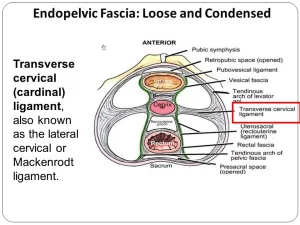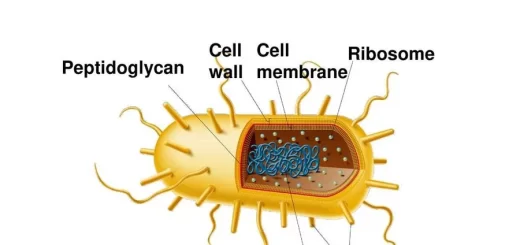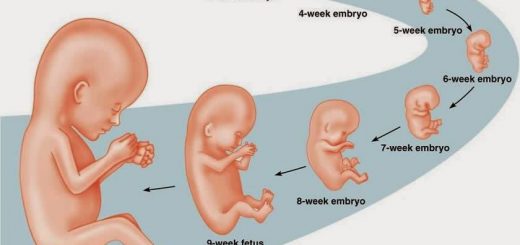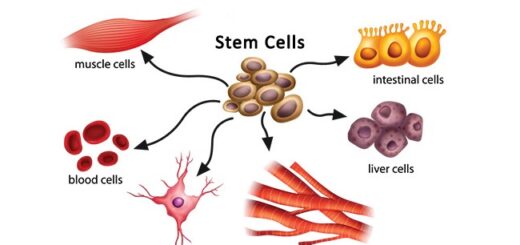Divisions of Perineum, Fascia of Urogenital triangle and Contents of Ischiorectal fossa
The perineum is the space between the anus and scrotum in the male, or between the anus and the vulva in the female, It is the region of the body between the pubic symphysis (pubic arch) and the coccyx (tail bone), including the perineal body and surrounding structures, It supports the muscles & functions of the reproductive, urinary, and digestive systems, If the tissue, nerves, or muscles of the perineum are damaged, it can cause problems with these systems.
Perineum
The perineum is the lowermost part of the trunk that includes the structures that occupy the pelvic outlet.
Boundaries:
It is diamond shape space that has the following boundaries
- Anterior angle: inferior pubic ligament (inferior to the symphysis pubis).
- Posterior angle: tip of the coccyx.
- Lateral angles: they are formed by 2 ischial tuberosities.
- Each side: Pubic arch (anterior).
Sacrotuberous ligament and gluteus maximus muscle (posterior).
Divisions of the perineum
The perineum is divided by an imaginary line that passes through the center of the perineum & connects the 2 ischial tuberosities into 2 triangles.
- The anal triangle (posterior to the imaginary line), contains the lower part of the anal canal in the midline and the ischiorectal fossa on each side.
- Urogenital triangle (anterior to the imaginary line).
Urogenital triangle
It is the anterior division of the perineum that contains the lower most part of the urethra, external genital organs, and their root & two fascial pouches (superficial and deep perineal pouches).
Boundaries:
- Anterior inferior pubic ligament.
- On each side: pubic arch.
- Posterior: an imaginary line that connects the 2 ischial tuberosities.
Contents of this triangle are enclosed in two spaces which are known as the superficial and deep perineal spaces or pouches. The two spaces are separated by a fibrous membrane called a perineal membrane.
The fascia of the urogenital triangle
1. The superficial fascia is differentiated into a superficial fatty layer and a deep membranous layer (Colle’s fascia). The Colle’s fascia is continuous anteriorly with the deep membranous layer of the anterior abdominal wall which is called Scarpa’s fascia. it closes the superficial perineal pouch inferiorly. On each side, it is attached to the pubic arch Posteriorly, it is attached to the posterior border of the perineal membrane.
2. The deep fascia has two layers:
- The superior fascia of the urogenital diaphragm.
- Inferior fascia of urogenital diaphragm (perineal membrane).
The perineal membrane (urogenital membrane)
It is a strong fibrous sheet that is stretched between the 2 pubic arches in the urogenital triangle, but leaving a space anteriorly between its anterior border and symphysis pubis. It has 2 free borders, anterior & posterior. It lies horizontally in the standing position. It separates the superficial (inferior to it) from the deep (superior to it) perineal pouches.
Its free posterior border is attached to the Colles fascia to close the superficial perineal pouch posteriorly. Its anterior and posterior borders are attached to the pelvic (superior) fascia of the urogenital diaphragm to close the deep perineal pouch anteriorly and posteriorly, respectively.
Structures piercing the perineal membrane:
In female:
- Urethra.
- Vagina.
- Internal pudendal artery.
- Artery of the bulb.
- Dorsal nerve of the clitoris.
In male:
- Urethra.
- Intemal pudendal artery.
- Artery of the bulb on both sides.
- Dorsal nerve of the penis.
- Ducts of the bulbourethral gland.
Perineal body (central perineal tendon)
It is a wedge-shaped fibro-muscular mass that is present in the center of the perineum (or centre of the posterior border of the perineal membrane). It lies between the vaginal and anal orifices. The perineal body serves for the attachment of 10 perineal muscles. The urethral sphincter, external anal sphincter, right and left levator ani, right and left superficial and deep perinei (4 in number), right and left bulbo-spongiosus. It is liable to be ruptured during labour leading to pelvic organs prolaps.
Perineal pouches
The urogenital triangle contains 2 fascial spaces (pouches), separated by the perineal membrane.
- Superficial perineal pouch: an open space that is continuous with the space deep to the membranous layer of the superficial fascia of the lower part of the anterior abdominal wall.
- Deep perineal pouch: It is a completely closed space between the superior and inferior fascia of the urogenital diaphragm
1) Superficial perineal pouch
Boundaries:
- Roof: perineal membrane.
- Floor: membranous layer of superficial fascia (Colle’s fascia).
- Posterior and on each side: the roof and floor fuse together. Posteriorly the space closed by the attachment of colle’s facia to the perineal membrane.
- Anterior: the space (pouch) is open and continuous with the space deep to the membranous layer of the superficial fascia of the lower part of the anterior abdominal wall.
Contents in female
1- Root of clitoris (2 bulbs of vestibule and 2 crura cavernosum).
2- Superficial perineal muscles:3 pairs of muscles
- Superficial transverse perineal
- Ischiocavernosus: covers the crura cavernosum
- Bulbo-spongiosus: covers the bulb of vestibule
3- Arteries: 3 branches of the internal pudendal artery, its 2 terminal branches, and the labial artery.
4- Nerves:
- Dorsal nerve of the clitoris.
- Labial nerves.
5- One vein: Deep dorsal vein of the clitoris.
6- Greater vestibular gland: One on each side. It lies deep to the posterior part of the bulb of the vestibule. Its duct opens in the vaginal vestibule lateral to the vaginal orifice.
Contents in male
1- Root of the penis (a bulb and 2 crura)
- Bulb of the penis: post extended part of the corpus spongiosum, it is covered by bulbospongiosus muscle. its post end is usually notched indicated bilateral origin just after its post end the bulb is pierced by the urethra, bulbourethral glands, and arteries of the bulb these structures also pierce the perineal membrane.
- Crura of the penis: posterior parts of corpora cavernosa – covered by ischiocavernosus muscle. It is pierced by a deep artery of the penis.
2- Superficial perineal muscles
- Ischiocavemosus: coveres the crura of penis.
- Bulbospongiosus: covers the bulb of the penis.
- Superficial transverse perineal m.
3- Arteries: 3 branches of internal pudendal artery; its 2 terminal branches and scrotal artery.
4- 2 Nerves: Dorsal nerve of the penis, and scrotal nerves.
5- One vein: Deep dorsal vein of the penis.
2) Deep perineal pouch (space)
Boundaries:
- Roof: Superior fascia of the urogenital diaphragm.
- Floor: Perineal membrane.
- Anterior, posterior, and on each side: The roof and floor fuse together to close the space.
Contents in female
- Urethra.
- Vagina.
- Muscles Sphincter urethrae and deep transverse perinei.
- Dorsal nerve of the clitoris.
- Internal pudendal vessels.
- Vessels of the bulb.
Contents in male
- Membranous urethra.
- Sphincter urethrae and deep transverse perineal muscles.
- Bulbourethral gland.
- Dorsal nerve of the penis.
- Internal pudendal vessels and their branches.
- Vessels of the bulb.
Anal triangle
It is the posterior division of the perineum that is bounded by:
- Tip of the coccyx (post.)
- Sacrotuberous ligament on each side.
- An imaginary line that connects the two ischial tuberosities (ant).
Contents:
- Lower part of the anal canal in the middle.
- Ischio-anal (Ischio-rectal) fossa on each side.
Ischiorectal Fossa
- It is the wedge shape fascial lined space that lies on each side of the anal canal.
- The fossa is filled with fatty tissue to give a space that can accommodate the distended anal canal during defecation.
Boundaries:
- Inferior boundary: skin of perineum on each side of the anus forming the base of the wedge
- Superior boundary: linear origin of levator ani (white line).
- Anterior boundary: Posterior border of the perineal membrane and superficial and deep transversus perinei muscles.
- Posterior boundary: sacrotuberous ligament.
- Medial boundary: Sloping. It is formed by the levator ani muscle and external anal sphincter.
- Lateral boundary: Vertical. It is formed by obturator internus muscle, obturator fascia and pudendal canal.
Contents of Ischiorectal fossa
- Ischiorectal bad of fat.
- Nerves: Inferior rectal nerve, the perineal branch of S4, and scrotal or labial nerve.
- Vessels: Inferior rectal vessels, scrotal or labial vessels, and transverse perineal vessels.
Pudendal canal
It is a tunnel formed by splitting of obturator fascia on the lateral wall of the ischio-rectal fossa about one and a half inches above the lower end of the ischium. The canal connects the ischiorectal fossa with the urogenital triangle.
The contents of the canal:
- Internal pudendal vessels.
- Pudendal nerve.
Internal pudendal artery
Origin: one of the two terminal branches of the anterior division of the internal iliac artery.
Course and distribution
It leaves the pelvis through the greater sciatic foramen (below the piriformis muscle to reach the gluteal region). In the gluteal region, it crosses the back of the tip of the ischial spine (between the pudendal nerve medially and the nerve to the obturator internus laterally). Then, it enters the lesser sciatic foramen which leads it to the pudendal canal (on the lateral wall of the ischiorectal fossa) to reach the perineum (accompanied by the pudendal nerve).
The pudendal canal transmits the internal pudendal artery to the deep perineal pouch where it ascends along the side of the pubic arch. It terminates by piercing the perineal membrane a short distance posterior to the symphysis pubis, then it divides into deep and dorsal arteries of the penis (or clitoris).
Branches
- Inferior rectal artery: runs in the ischiorectal fossa.
- Perineal artery (labial or scrotal): It runs in the superficial perineal pouch, to the scrotum or labia majora.
- Artery of the bulb of the vestibule (or penis).
- Deep artery of the clitoris (or penis).
- Dorsal artery of the clitoris (or penis).
- Urethral artery.
Pudendal Nerve
It is one of two terminal branches of the sacral plexus (S2, 3, 4). It leaves the pelvis through the lower part of the greater sciatic foramen below the piriformis. It crosses the sacrospinous ligament then passes through the lesser sciatic foramen to reach the pudendal canal.
It accompanies the internal pudendal vessels. At the posterior end of the pudendal canal, the pudendal nerve gives off the inferior rectal nerves. It soon divides into two terminal branches: the perineal nerve, and the dorsal nerve of the penis (males) or the dorsal nerve of the clitoris (in females).
Branches:
- Inferior anal nerves.
- Perineal nerve: gives two scrotal or labial nerves.
- Dorsal nerve of penis or clitoris.
You can follow Science Online on Youtube from this link: Science online
You can download Science Online application on Google Play from this link: Science online Apps on Google Play
Organs of male genital system, Structure of the testis, Functions of Sertoli cells and Leydig cells
Bony pelvis structure, types, organs, Differences between male and female pelvis
Pelvic peritoneum, Muscles of the pelvic wall, Pelvic vessels, Sacral plexus branches
Urinary passages function, structure of Ureter, Urinary bladder and Uvulae vesicae
Urine formation, Factors affecting Glomerular filtration rate, Tubular reabsorption and secretion




